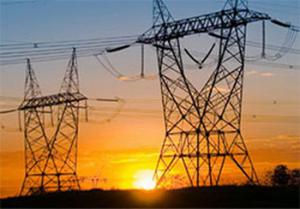GridNew facility will be center of research to make U.S. grid more robust, smarter
The U.S. electric power grid is the most complex machine ever built. Transforming it from an early twentieth century machine to a twenty-first century engine for innovation is a demanding scientific and technical challenge. The Pacific Northwest National Laboratory has launched its new Systems Engineering Building (SEB), in which industry, academia, and leading scientists will conduct research which will change the future of the U.S. power grid. “The private sector and the government must work together to ensure that we can prevent and recover from grid disruptions, whether they come from cyberattack, physical attack, or severe weather that is brought on by climate change,” Deputy Energy Secretary Elizabeth Sherwood-Randall said at the building’s dedication.

U.S. power grid still vulnerable // Source: eia.gov
At the north end of Pacific Northwest National Laboratory’s campus sits a building where industry, academia, and leading scientists will conduct research which will change the future of the U.S. power grid.
“The new Systems Engineering Building (SEB) at PNNL will help drive the science and engineering necessary to provide a clean energy future for the nation. It will let researchers here address national challenges related to the electricity delivery and energy conservation from cybersecurity to reliability,” said Deputy Energy Secretary Elizabeth Sherwood-Randall to a crowd of about 200 dignitaries, PNNL employees, and Tri-City community leaders gathered at the building’s recent dedication.
“The private sector and the government must work together to ensure that we can prevent and recover from grid disruptions, whether they come from cyberattack, physical attack, or severe weather that is brought on by climate change,” Sherwood-Randall said.
Behind the SEB’s glass doors are power grid and buildings control rooms, testing platforms, and a number of laboratories to address a range of energy challenges. PNNL says that the facility also features the latest in industry software and real-time grid data with access to advanced computational capabilities which allow researchers to design, test, and evaluate tools and concepts in a setting that mirrors current industry conditions.
Elliot Mainzer, Bonneville Power Administration administrator, also spoke at the SEB dedication. He said his organization has been working with PNNL researchers to address the challenges facing an industry going through enormous transformation.
“At Bonneville we grapple with many of the day-to-day issues that are facing our industry, and I can tell you that our collaboration with PNNL has been one of our most fruitful working relationships — everything from energy efficiency to demand response to smart grid to our fish and wildlife program,” Mainzer said. “You made a difference, and we are internalizing and incorporating your innovations into our day-to-day work. I really, really do appreciate you.”
PNNL notes that through the SEB, it is expanding its Electricity Infrastructure Operations Center to include two power grid control rooms that can be configured to accommodate a variety of industry testing needs and scenarios.
The U.S. electric power grid is the most complex machine ever built. Transforming it from an early twentieth century machine to a twenty-first century engine for innovation is a demanding scientific and technical challenge.
“By linking SEB’s new, high-speed data streams with PNNL’s high-performance computing capabilities, we can see the grid as never before, enabling improvements to today’s tools as well as completely new, predictive capabilities,” said Steven Ashby, PNNL laboratory director. “The SEB enables researchers to work side-by-side with industry to accelerate these advancements, which are critical to achieving DOE’s vision of a reliable, secure and sustainable power system.”
